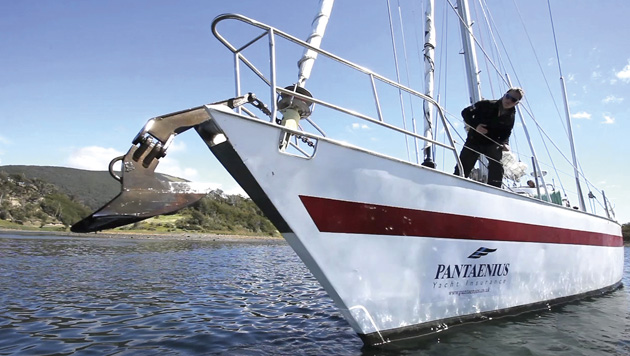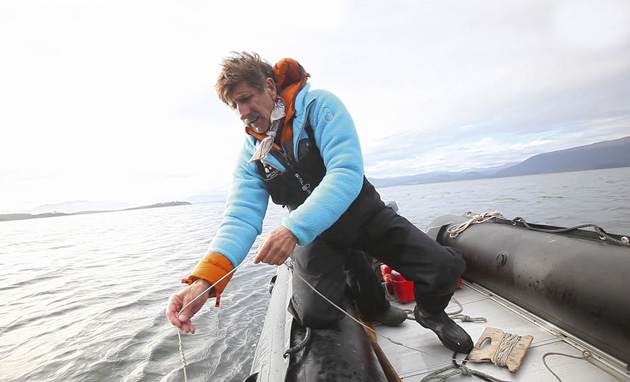Gaining shelter on a hostile coastline can be safer than toughing it out offshore. Skip Novak looks at how to con your way into an unfamiliar bay
Going off soundings and having the ability to boldly go where no boat has gone before (or at least feel that way) is not only a desirable feature of cruising in remote areas, it also underpins a safety issue. In extremis, gaining shelter on a hostile coastline could mean saving the vessel and the crew. Even if not, it can often be safer than toughing it out on the outside with a risk of heavy weather, especially if caught on a lee shore.
Coming in from offshore is the critical part, as the risk of a grounding can, of course, be catastrophic. Counterintuitive though this is, if the coastline is unsounded or poorly sounded and there is a seaway running, that is all for the better. You can read the water with a swell far easier than in flat conditions. If the swell is not breaking, any swirling motion of the sea surface that is inconsistent with the normal swell will indicate a dangerous depth.
Assuming your depth sounder is working, it should be easy to determine a channel and follow it through the obvious dangers. Although it can appear calm and flat, a body of water open to the ocean is rarely so; if you do go aground, you will immediately realise the height of the swell as you bounce up and down on the bottom.
As an aside, when approaching an anchorage, keep some sail up as long as possible in case you have to sail yourself out of there – if you were to suffer engine failure, for example.
Nosing around blind
Although getting inside a bay that affords sea protection is ultimately safer, it is still tricky and the more so if the clarity of the water is poor, as is common in high latitudes, or if the light is low or shining in your eyes. On a boat of, say, 3-4m draught, I would quite happily nose around blind with 8-10m on the sounder.
Spotting a potential safe spot in an anchorage is next. If the bay is open and access is straightforward with an offshore wind, you can normally pilot yourself in with the sounder. Studying the coastal features and how the land along the shore meets the water can give clues to what’s coming. Sheer cliff faces and steep ground usually indicate a safe approach, but they could also mean there is insufficient bottom (ie, that it is too deep) to anchor.
A gently sloping shoreline means the bottom will rise roughly at the same rate in most cases, indicating a good depth at some point and reasonable holding depending on the composition of the bottom. Anomalies to these observations abound, so beware!
If access to an anchorage is complicated because of a narrow entrance or bends in the channel, a channel that is kelp-bound or a channel running with current, then probing with the boat at this point even with a depth sounder starts to be risky. If you start sweeping onto rocks or shoal water it might be difficult or impossible to turn the boat around or back out of it with impunity.
Take to the dinghy
At this point it pays to take the time and effort to launch the dinghy and sound out a clear passage into the anchorage. If single- or short-handed, this might mean anchoring in deeper water and leaving the boat unattended.
While the boat stays safe and on station on the outside, a crew in the dinghy goes in and runs a line into the anchorage taking soundings. For years on Pelagic (decades, actually) we used my original leadline made from 3mm cord rolled onto a piece of plywood with a handle. Weighted with a half dozen 16mm nuts, the cord is knotted once for one metre, two for two metres and so on. It couldn’t be simpler.
Swinging the lead
As the dinghy travels slowly forward, you spin the line in a vertical circle (being careful not to hit the driver on the head) and let it fly forward with plenty of slack paying out. If done correctly, this should enable you to read the bottom by lifting the lead clear when the dinghy is directly above it, then counting the knots at the waterline, all without changing the speed of the dinghy. It is rhythmic.
Although we now have a simple electronic handheld sounder that does the job – you hold it overboard and press a button – I still enjoy swinging the lead.
Once you have swept a clear path in with, say, a metre to spare under the keel, you can take the boat in with relative confidence along that route. If doglegs are necessary, it is of course more complicated, so a handbearing compass is necessary to fix some points to follow, or some transits on land features.
It hardly needs saying that you can do the same with a GPS and a trackback feature, but getting back to the basics will stand you in good stead on the day when you run out of power or the electronic handheld sounder doesn’t work.
I would also stress that while manoeuvring on this micro scale, staring down into instruments can be a negative thing, in spite of their pinpoint accuracy. There remains no instrument equal to the human brain, continuously calculating the myriad variables, using simple visual observations to take in the big picture – judgement, it is called.
Having sounded the general depths on the way in, sending a crewmember aloft to con you in, if you can spare someone, is well worth it to be on the safe side; there is no guarantee you have discovered every rock and high spot along the route in.
With someone on the first spreaders (harnessed on just in case you do go bang) and an agreed system of hand signals to use rather than just relying on shouting back and forth, it will be easier to work round any surprising obstacles.
If you plan on swinging to a single anchor, once the hook is down it pays to take more time in the dinghy to make some circular passes around the anchorage gauging the lay of the bottom. This is less important if you also tie to shore to fix your position.
Do’s and don’ts
Do
- Take the time to figure things out before committing
- Observe the clarity of the water, the direction of the light, current and tidal situation on shore
- Approach an anchorage with light overhead or behind you if possible
- If entering via a channel, approach an anchorage against the current and on a slack or rising tide
Don’t
- Take down and stow the mainsail early – you need to be ready to make sail if things go wrong
- Forget to have an old-fashioned leadline to hand in case the electronic handheld sounder fails
- Let down your guard after anchoring. Sound the anchorage around the boat and prepare an escape plan just in case
Part 10: Anchoring in heavy weather
In the next part Skip turns his attention to the techniques and equipment required for anchoring securely in high winds and remote places.
12-part series in association with Pantaenius








